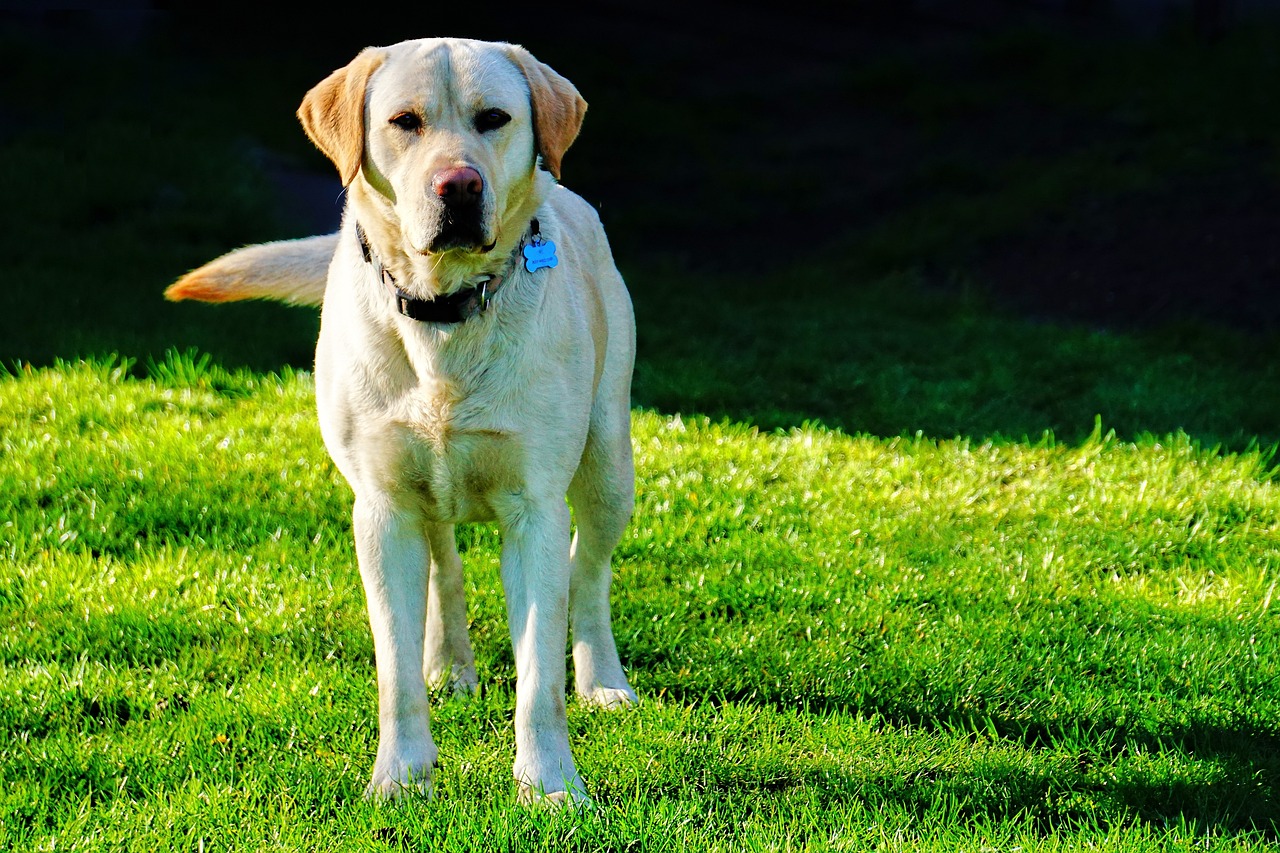Are you looking for an affectionate furry friend and thinking of buy or adopt Labrador retriever? Then you are on the right track. This sweet-faced dog comes under India’s most famous dog breeds. They are joyful, friendly, outgoing, and loyal by nature. If you want your dog to be socialized and keep you engaged with its cute activities, then go for the Labrador retriever breed. In this blog, we will discover everything about a Labrador retriever that will help you make better decisions while choosing a furry member for your family.
Quick Information
• Origin—Newfoundland, Canada
• Life expectancy—13-15 years
• Height—23-25 inches (male), 22-24 inches (female)
• Weight—28-37 kg (male), 26-33 kg (female)
• Color—yellow, black, chocolate, white, diluted chocolate, diluted black
• Ideal weather—22°°C
• Price range—Rs. 8000-40000/-
• Energy level—High
• Shedding level—Moderate to high
Labrador retriever behavior
Labrador retrievers, also known as labs, are gentle, friendly, and highly spirited dogs. They have a patient attitude. They are versatile, as they can be good family dogs and are good police or military dogs too. Labs are great companions for children and the best partners for outdoor activities such as swimming, games, hiking, etc. They don’t require much training to socialize with other people and pets.
Labrador retriever appearance
This Canadian breed is medium to large in size but highly fragile at heart. They have dense, smooth, and shiny coats; expressive eyes; floppy ears; medium-sized limbs; and slightly expanded bodies. They came in various variations in the global market, such as yellow, black, brown, white, pale cream, etc.
Labrador retriever coats and qualities
Labs generally have double coats that contain two layers: the outer layer, which protects the dog from external environmental conditions such as dirt, dust, snow, rain, etc., and the second layer, which is an underlayer that insulates and maintains the body temperature of the dog according to the external weather. They come in three coat colors: cream, black, and brown, and their coat is dense and short with a lustrous, shiny, and soft texture.
Things to check before you buy or adopt Labrador Retriever

Photo by Binyamin Mellish
It is quite difficult to own a pet dog, especially if it’s a foreign breed dog. There are so many things that should be done before making these furry babies your new family members.
Checklist before bringing a Labrador home
Adopting any pet comes with required responsibilities because you are not just carrying them to your home; this requires a lot of financial and emotional effort to fully adapt to your place.
Let’s break down the listing of what you need to be sure about before adding a furry member to your family.
1. Proper space—Dogs need proper space to retreat, exercise, and roam around the house. Ensure the space availability according to the breed and size.
2. Essentials—dogs have essentials as humans do. This covers proper high-quality stainless steel bowls for water and food, puppy food recommended by vets or breeders, a breakaway collar and leash, a small comfy dog house (optional), soft bedding suitable for puppies, cleaning supplies, puppy toys including chew toys, grooming supplies such as a comb, nail brush, shampoo, toothpaste, body oil, etc.
3. Monthly cost—the monthly cost depends upon the following factors:
• High-quality basic food.
• Grooming either at home or through professional services.
• Medical expenses—On regular vet checkups, vaccinations, deworming, parasite controls, etc.
• Dog accessories and toys—this can also be included in monthly expenses.
• Training classes—depend upon duration and types.
• Other lifestyle choices—this includes high-quality food, grooming, training, and care.
4. Time—Before adopting any dog, make sure you can give them enough time, as it is very crucial for their mental and physical growth. Proper training, grooming, and making a strong bond with the family require patience.
5. Compatibility—A happy dog reduces stress and anxiety for family members. They are known for bringing everyone together, so here, owning a compatible dog is very important. And before expecting love and affection from your pet, you need to be sure about how secure and comfortable he is with your family. Encouraging socialization and proper training makes your dog congenial and adaptable.
Questions to ask a breeder or a shelter

1. Vaccination status
Knowing your dog’s vaccination status is a key step. It ensures the health of your dog and prevents him from deadly diseases such as parvovirus, rabies, and distemper. The proper immunization of your dog also protects your family members from fatal diseases like rabies. Always ask for the full information about the vaccination stage, timings, and future required doses.
2. History, behavior, and temperament
Learning about your dog’s history, traumas, and behavior grants relevant insights into the dog’s upbringing and growth. Determining its temperament helps you to choose the competent furry friend in accordance with your lifestyle, and this transparency is required to improve the chances of a future cordial relationship with your pet.
3. Puppies’ early life
You can ask about the puppy’s socialization, their interaction with other people and pets, whether they were raised indoors or outdoors, the puppy food they eat, Labrador retriever health issues, and initial potty training.
4. Documentation
Acknowledging registration documentation, written contracts, and asking about the dog’s spay and neuter agreement and references are mandatory before adopting a dog.
Monthly expenses of Labrador retrievers
Regular expenses are required for fresh dog food, dog accessories, grooming, and veterinary care. The assumption of these expenses is
• Food—Rs. 3500-5000/- per month.
• Accessories—Rs. 1000-2000/- depending upon the lifestyle
• Grooming—Rs. 2500-4500/- terminally
• Veterinary checkups, including vaccinations—Rs 3000-6000/- annually.

Labrador retriever care guide
1. Feeding and Nutrition
Labrador retriever feeding portions and nutritional guides depend upon the age, weight, and size of the dog. Generally, they need a protein-rich diet to fuel their body. In this case, chicken, lamb, and fish are suitable for labs. Their home-cooked food must have enough fiber, fats, carbohydrates, protein, essential vitamins, and minerals.
Recommended customized Labrador Retriever food
• Wet food—wet foods are nutrient-rich gravy of protein sources such as meat, chicken, and fish. They are 80% moisturized and sterilized canned products.
• Dry food—Dry foods have the same ingredients, but they are more stable than wet food and have about 15-20% moisture. Dog food manufacturing companies process kibbles (dry food) by initially making protein-based dough, air-drying them, and spraying them with vitamins, minerals, fats, and oils before the final packaging.
2. Exercise and playing
Labrador retrievers are prone to obesity; that’s why they require a lot of exercise and play. The owner needs to engage them with puzzle toys and scent games. This helps in their mental stimulation. On the other hand, daily running, walking, periodic swimming, agility training, and occasional hiking maintain the physical demeanor and induce muscle development.
3. Grooming essentials
A Labrador retriever needs proper grooming, and this consists of
• Brushing 2-3 times a week with a slicker brush or de-shedding tool.
• Brushing teeth 2-3 times a week to avoid plaque buildup.
• Bathing at least once a month with Labrador coat-specific shampoos.
• Weekly ear cleaning, especially after bathing and swimming, to avoid infections
• Nail trimming once a month to avoid overgrowth with specific nail tools.
• Hair oiling once a month to maintain the lustrous coat of your Labrador.
4. Training and socialization
Early essential training and socialization are important for a well-behaved dog. Your dog must be familiar with sounds, sights, pets, and people in a positive manner. Their basic training includes basic obedience, potty training, leash training, routine establishment, and mental stimulation through toys and games. Don’t forget to use positive reinforcement methods like praise and treats as a reward between these trainings.
5. Regular vet checkups
Regular vet checkups are very crucial because your pet is an expert in hiding the pain. They only show something is wrong with them when the pain reaches the threshold. You should go for their periodic vet checkups to avoid future suffering. Their routine health checkups generally include blood and urine tests, physical examinations, biochemical profiles, and parasite detection.
FAQ
1. Do Labrador retrievers shed?
Yes, like all the other dogs, Labrador retrievers shed. The level of their shedding is moderate to high. They shed more in the spring and fall seasons as they adjust themselves for further seasons.
2. How much does a Labrador retriever cost?
The price range varies as per the area and quality of the breed (genetic history), but in India, you can easily buy Labrador retrievers for Rs. 8000-40000 from any reputable breeder.
3. Is a Labrador retriever a guard dog?
No, Labrador retrievers are not guard dogs because of their friendly nature. They choose to greet strangers instead of showing any aggression. But they are highly intelligent; that’s why they are always the initial choice for police or military dogs.
4. When do Labrador retrievers stop growing?
They generally mature faster and gain their full height at the age of 12-18 months. But the muscle development continues up to 2-2.5 years based on their diet and exercise routine.
5. Can Labrador retrievers be left alone?
Yes, they can be left alone for some time if they are properly trained for this; otherwise, they would develop separation anxiety and destructive behaviors due to the lack of attention they need.
Final words
Labradors are a friendly, cheerful, and low-maintenance breed. If we talk about popularity, then they are one of the most famous dog breeds across the globe. We advise the new want-to-be owners to buy or adopt a Labrador retriever, but from the beginning, you have to be ready emotionally and financially because this is a long-term care commitment.
Read more if you want to know about The Best Dog Breeds in India

